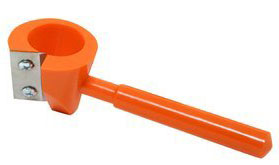 Make impressive-looking floral garnishes out of carrots, daikon radishes and much more with this brilliantly-designed vegetable peeler. See the steps and the finished product here.
Make impressive-looking floral garnishes out of carrots, daikon radishes and much more with this brilliantly-designed vegetable peeler. See the steps and the finished product here.
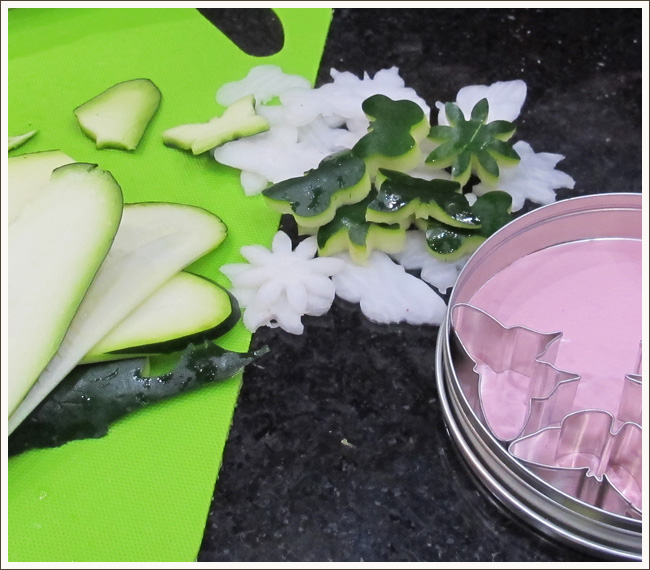
Shapely vegetables. Thinly slice your vegetable horizontally (I used zucchini and daikon radishes here, but you could also use yellow squash or carrots, too). Use small cookie cutters to cut out shapes. On the zucchini, I used the outer peel because it was colorful, and saved the inside slices for grilling. Since it was spring, I chose flowers and butterfly shapes. In the fall, I have a little set of leaf shapes, and at Christmastime it’s tough to choose — there are so many choices, snowmen, trees, angels, and more.
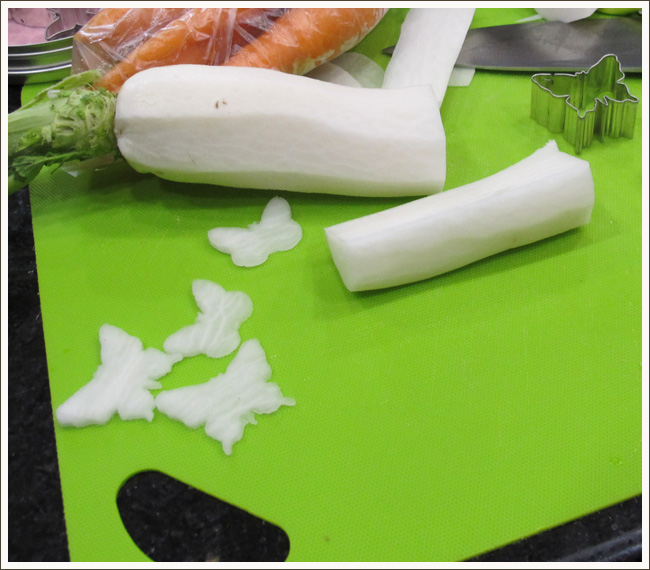
Pretty radishes. The white daikon radish is very mild and it’s thick, which makes it easy to cut shapes from.

Dressed up salad. This is the finished product — our romaine letter salad with cherry tomatoes, red onions, and cutouts from butterflies and flowers.
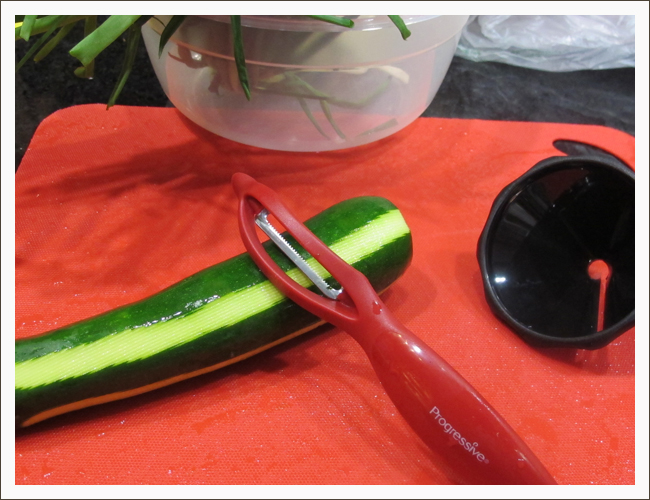
Sometimes you want a bed of something to place your food on and you’re tired of using lettuce or kale for that purpose. Another alternative is shaved vegetable spirals. Here, we begin by taking stripes of peel off our zucchini.
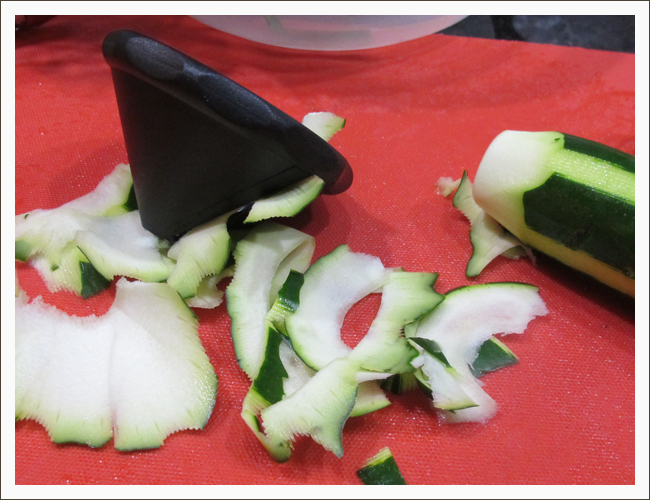
Next, we insert it into the spiral slicer as if we’re sharpening a pencil. A little practice is required. At first, we weren’t having very good luck, but we began to catch on after a few tries.
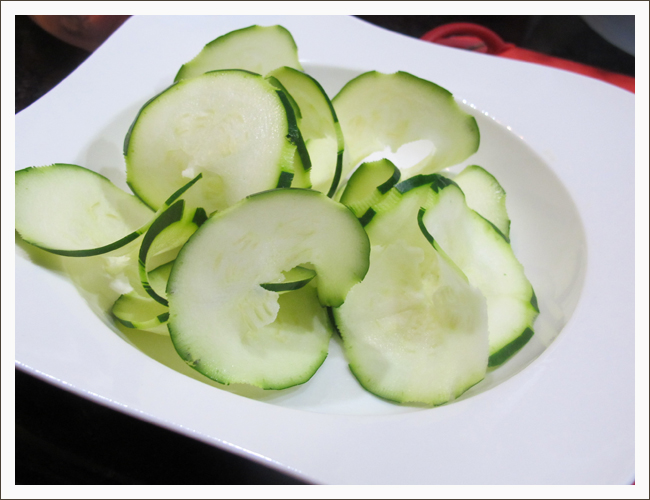
Then, as Henry Higgins said to Eliza Doolittle, “By jove, I think you’ve got it!” [If you have no idea who I’m referring to, I sentence you to one rental of the classic musical My Fair Lady. Don’t come out to play until you have complied with your sentence. That’s an order!] We then used the spirals underneath a set of Fried Stuffed Jalapeños.

One of the easiest garnishes to make is a vegetable rose. Here, you see ones made of tomato peel and others from zucchini peels (the discards from our spiral slicing on the zucchini when we were learning how to use the tool.) For the tomato roses, take a sharp paring knife and a tomato. Start at the upper part of the tomato and cut a thin ribbon in a spiral pattern. Curl the long piece around itself to form a flower shape. Do the same with the zucchini, or use the spiral slicer. We’ve garnished the garnish with julienned betts on one and a strip of beet on another. Cute, huh? They added another note of visual interest on our Lettuce Wraps.
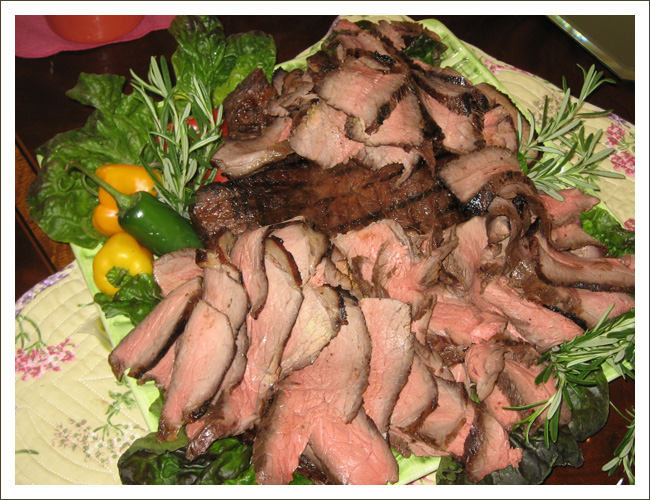
Making meat look good. Here is an example of garnishes in action. This started as a simple platter of sliced skirt steak to be used for sandwiches. With a deep green leafy lettuce used as a backdrop and rosemary and colorful peppers tucked around, it’s a WOW presentation.
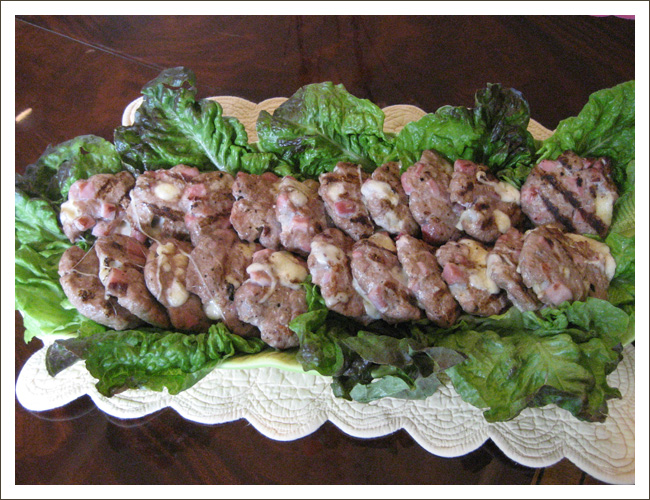
Imagine how homely these tasty little turkey burgers (which also contain chunks of swiss cheese and ham) would be, were it not for a bit of lettuce. Jazzing up the plate takes just a few seconds. So worth it.
The Ugly Zone
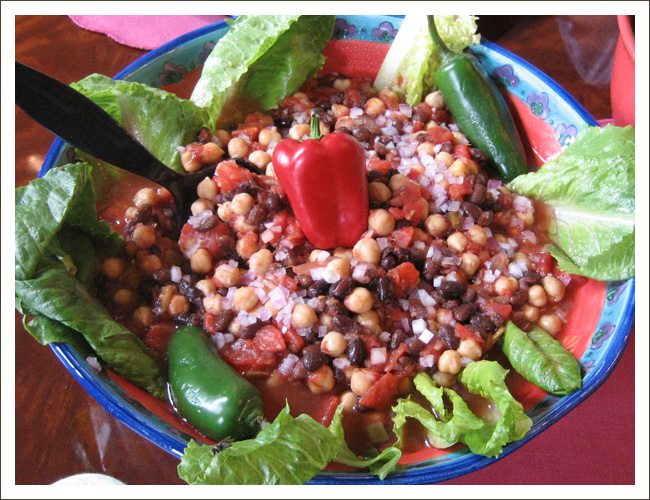
So close. The garnishes actually look pretty good on this one, except for the red pepper in the middle. Between the red in the bowl, the red in the placemat, and the stewed tomatoes in the black soy bean and garbanzo bean dip, there’s too much red. We needed green in the center to really make this dish come alive.
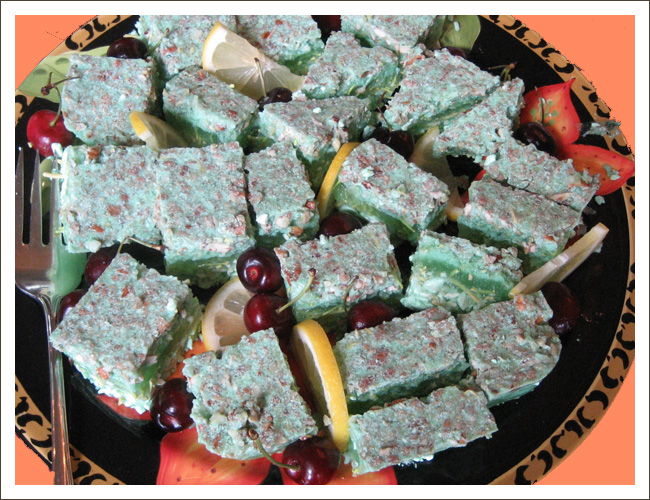
Ick! Not good! This plate, on the other hand, shows garnishes gone wrong. (Does that have the makings for a reality show?!?) This is a wonderful lime jello dessert. It makes no sense at all for the garnishes to be lemons and cherries. Wedges or slices of lime would have been much more appropriate and therefore much more visually appealing. You know how they say you should get dressed, then look in the mirror and remove one thing (hopefully not an essential item, like your underwear — maybe that’s where Paris Hilton and Britney went wrong)? The same rule might apply to a plate of over-garnished food.


[…] and Massimo Bottura, local chefs are transforming food scraps into gourmet dishes. For instance, vegetable peels are being turned into garnishes, and meat trimmings are being used to create rich stocks and sauces. These practices not only […]